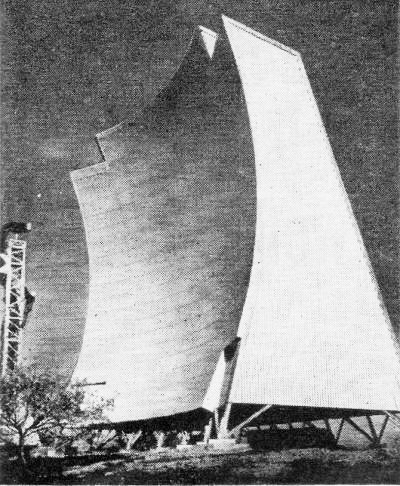First Over-the-Horizon TV Bridge |
|
First Over-Horizon TV Bridge New 785-mile TV-telephone link set up between Florida and Cuba employs scatter.
One of four 60·foot "big screen" Blaw-Knox antennas used in new microwave scatter link. Scientists and engineers at Federal Telecommunication Laboratories have developed the world's first microwave radio system capable of carrying television and more than 100 telephone channels for a distance of almost 200 miles. Over-the-horizon microwave equipment, employing scatter techniques, provides an electronic bridge between Florida City, Florida and Guanabo, Cuba - a distance of 185 miles. High-power transmitters and high-gain antennas are used in the new link. The system differs from others constructed or under construction in that it incorporates a frequency band broad enough to accommodate television and more than 100 telephone conversations at the same time. The conventional "O/H" system is narrowband and is capable of carrying only a limited number of voice or telegraph channels. Overland links from the O/H terminals to the main offices in Miami and Havana were installed by the American Telephone and Telegraph Co. In order to achieve the utmost in system reliability, broadband transmitters and receivers are used in a suitable dual and quadruple diversity system. The equipment, which is basically FM, operates in the 692-880 mc. band. A transmitter power level of 10 kw. is used. Besides this Florida-Cuba link, International Telephone and Telegraph Corp. is installing five major O/H links. One joins the 240-miles-apart Mediterranean islands of Sardinia and Minorca, providing direct telephone service between Spain and Italy.
President Kennedy addressing the launch of the Telstar satellite
Posted November 10, 2021 |
|


